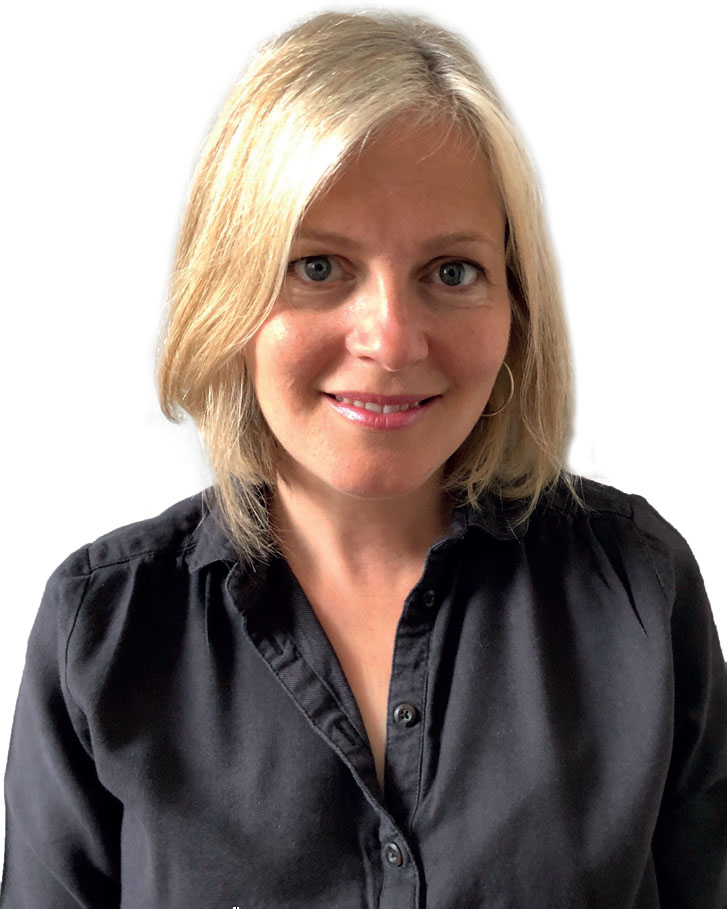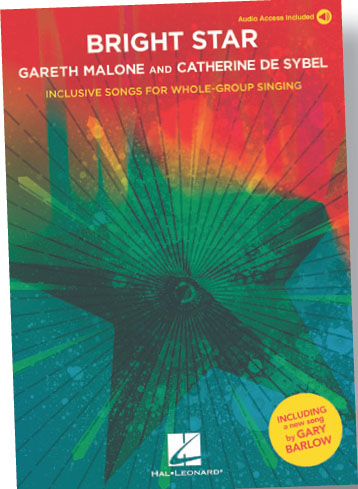
Bright Star is a new collection of songs by Gareth Malone and Catherine de Sybel, including one song written in collaboration with Gary Barlow and Eliot Kennedy. It provides inclusive songs designed to get the whole school singing. Each song comes with demonstration and backing tracks, full scores and photocopiable melody-plus-lyrics and lyric sheets. Themes covered include growing up, friendship and community, life choices, the environment and bereavement.
What did you set out to make with this project?
Catherine de Sybel: This is a book of pop-style, secular songs for eight- to 14-year olds. They are quick learns for the teacher and students, and they link to topics that appeal to all members of the school community across all year groups. Teachers are really time poor, and we wanted to make a resource that was user-friendly, for specialists and also non-music specialist teachers. That's why we've provided lots of support materials, in the form of demo tracks and backing tracks.
Gareth Malone: Any musician who works in schools will have experienced that sinking moment where you go to the cupboard to look for the term's repertoire and you think, ‘Oh, I've done that, and I've done that one.’ You always need new repertoire – times change, and kids' tastes change. I think it's really important to keep replenishing the shelves. I wanted to write secular, neutral songs that can be used in assemblies and are linked to a theme. I'm thinking about a head of year, who isn't a music specialist but who wants to mark a moment, or likes the idea of having music but doesn't know how to go about it. We wanted a resource where you can literally bung on the demo track, put the lyrics on the board, hear it twice and the kids will be able to sing it. There are bits to stretch you – there are harmonies, you can give the kids the sheet music and there are ways to differentiate it. But most of the songs should be accessible to all students in the first session.
What was the spark for the project?
GM: I first met Catherine when I was sent by the London Symphony Orchestra to the school where Catherine was working at the time. We ended up working together on a lot of projects and stayed in touch. I was aware that she composed, and I had always wanted to write a children's songbook.
CdS: We went out for a country walk one day and we were talking about assemblies in general and the difficulties of getting whole-group singing set up in schools. Really, we just wanted to get kids singing – children who would otherwise be a bit reluctant, or who hadn't had any experience of singing in primary school.
GM: We had lunch with Jonathan Wikeley from Hal Leonard Europe, and I said, ‘Look we've got this idea for a book,’ and it just happened. Hal Leonard Europe were also thinking that there was a gap in the market for a non-specialist assembly book for secondary schools or Years 4, 5 and 6.

Catherine de Sybel
What was the workflow? Did you sit together on the piano stool?
CdS: We did, actually. We teamed up on a weekly basis, and it took almost three years from start to finish. We would work collaboratively in Gareth's studio, or he would come over to my place. We would work mainly at the piano. Maybe one of us would bring some lyrics, or we would write lyrics together. Or he would bring part of a song and say, ‘I was trying this idea out, thinking about the first day of school,’ and then maybe I would work on a second verse for the next week.
We were also able to trial them a lot, Gareth with the various choirs that he conducts, and I was able to try them in school. That was a key part of the process – taking the material to young people and seeing whether or not they really bought it. Ages eight to 14 can be a difficult transition time for boys, and through working with the London Youth Choir and my school students we've tried to pitch it as inclusively as possible so that boys with changing voices can be involved. There are optional harmony parts in all but one of the pieces, for example the lower part in ‘Don't Know What I'm Looking For’. I tried this song with some Year 9s and Year 10s and they learned it really fast. They really liked the fact that there was a low part.
GM: The pivotal moment for us was taking this to teenagers and being told by a very perceptive student that once you get to secondary school, the issues you are concerned with aren't clear cut. It's not like, ‘Hey kids, hold hands before you cross the road’. This student felt that singing should be an opportunity to work out feelings and identity, but without answers. We had a couple of early versions in which we were a bit didactic, but the students said to us, ‘We get that all day. What we want in an assembly song is a chance to let it all out and to be singing our own questions, rather than it feeling like it's us singing adult words.’
How did you come up with the song themes?
CdS: I knew them from being a teacher, and we talked to a lot of young people. We spoke to teachers at primary level, and we both have children of primary age. We wanted to take on difficult themes, such as identity and life choices – topics with empowering messages. We looked at the environment and what we can do to make a difference, a positive impact. We also looked at bullying, because we know that sadly it happens throughout children's lives at school, and also some really difficult topics like bereavement.
How did Gary Barlow get involved?
GM: I thought he'd be a really good person to get on board because I think he understands the difficulties of having a teenage kid and trying to get them involved in music. He was really up for it, and so was Eliot Kennedy, whom Gary writes with a lot. We spent a day writing ‘Don't Know What I'm Looking For’ and Gary's whole approach was: ‘Kids don't want to be lectured to. Everyone's trying to mould them into something, and they're trying to work out who they are.’ So that's what that song's about. It was a really great experience working with him.

Bright Star, published by Hal Leonard, costs £39.99 and is available to buy from all good music shops and online retailers.








